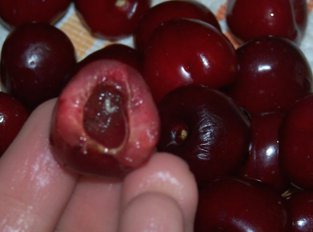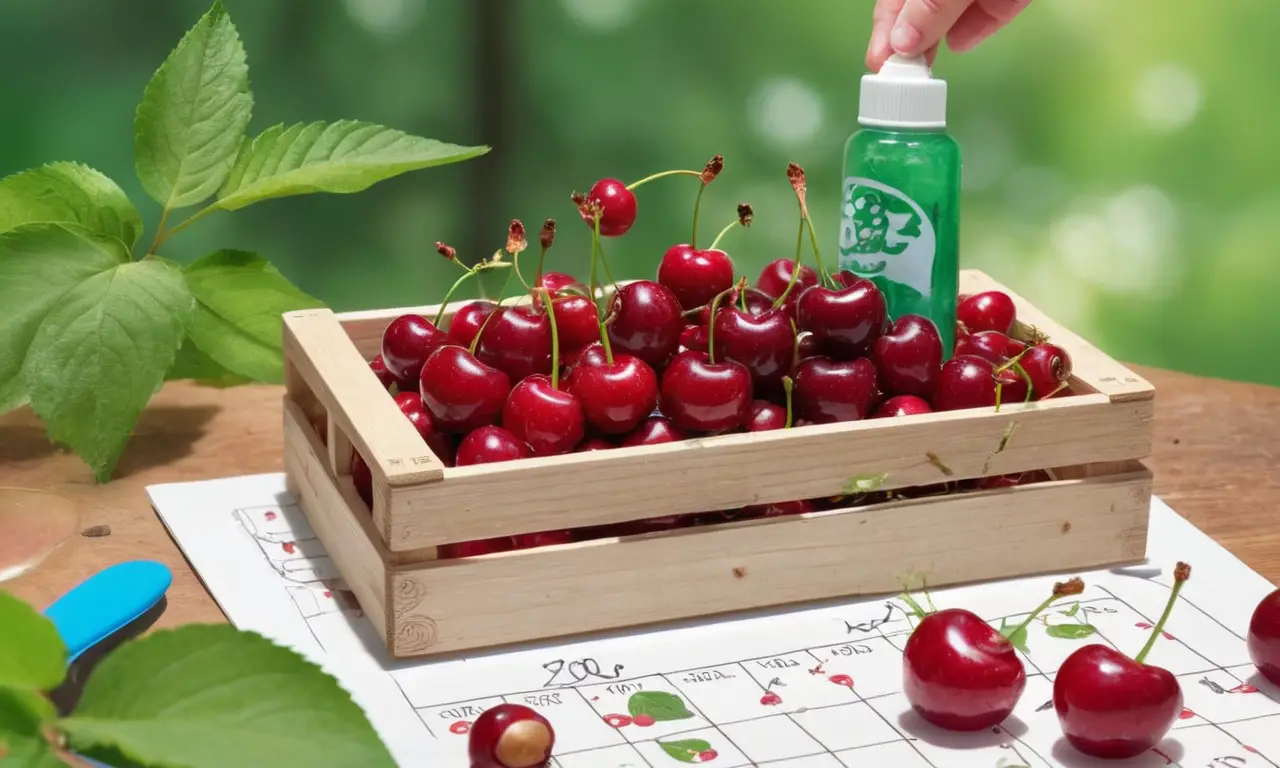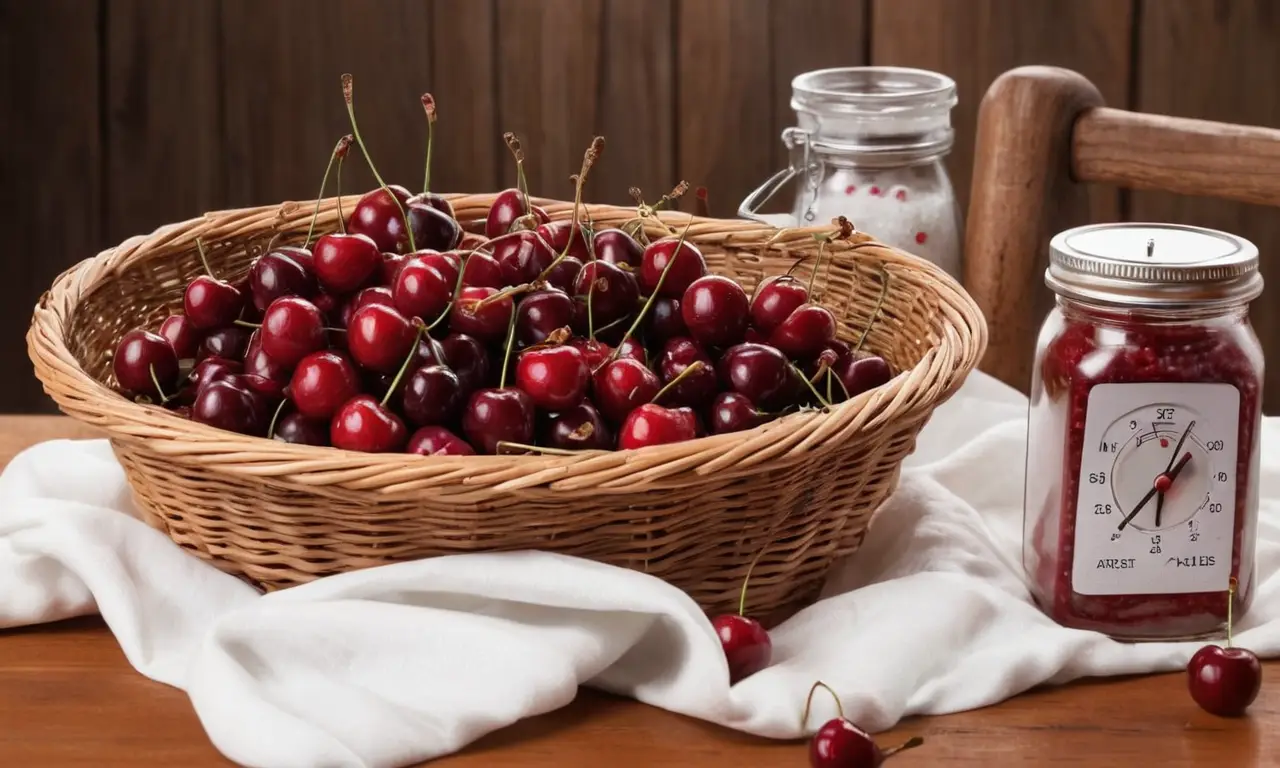
Finding worms in your cherries can be a disappointing experience, ruining the taste and enjoyment of this delicious summer fruit. While it’s true that some cherry varieties are more prone to infestation by insects like fruit flies, understanding how these infestations occur and implementing proper storage practices can significantly reduce the risk of encountering unwelcome guests in your bowl of cherries. This article will delve into the common causes of worms in cherries, provide practical tips for preventing infestations, and guide you on how to store cherries effectively to keep them fresh and worm-free.
This comprehensive guide will explore the various factors contributing to cherry infestations, offer actionable steps to prevent them, and equip you with the knowledge to choose and store cherries correctly, ensuring a delightful and worm-free cherry experience.
Worms in Cherries
The presence of worms in cherries is often a sign of infestation by fruit flies or other insects that lay their eggs within the fruit. These tiny larvae then hatch and feed on the flesh of the cherry, creating the visible “worms” we encounter. While these larvae are generally harmless to humans, they can significantly detract from the taste and appearance of the cherries.
Different types of insects can infest cherries, each with its own life cycle and preferences. Fruit flies are among the most common culprits, attracted to ripe or overripe cherries. Other insects, such as cherry fruit flies and codling moths, can also pose a threat, particularly in warmer climates. Understanding the specific types of insects prevalent in your region can help you implement targeted prevention strategies.
Cherry Infestation Prevention

Preventing cherry infestations requires a multi-pronged approach that focuses on both pre-harvest and post-harvest practices.
Pre-Harvest Measures
For home gardeners, implementing preventative measures before harvest is crucial. This includes:
- Regular Monitoring: Inspecting your cherry trees regularly for signs of infestation, such as small holes in the fruit or the presence of adult flies.
- Trapping Insects: Utilizing traps to capture adult fruit flies and other pests can help reduce their population around your trees.
- Maintaining Tree Health: Ensuring your cherry trees are healthy and vigorous by providing adequate water, nutrients, and pruning can make them less susceptible to infestations.
Post-Harvest Measures
Once cherries are harvested, proper handling and storage practices become essential:
- Prompt Cooling: Refrigerating cherries as soon as possible after harvest slows down the ripening process and reduces the attractiveness of the fruit to insects.
- Cleanliness: Maintaining a clean kitchen environment and washing hands thoroughly before and after handling cherries can prevent cross-contamination.
Choosing Fresh Cherries
Selecting fresh, high-quality cherries is the first step in preventing infestations. Look for:
- Firmness: Choose cherries that are firm to the touch but not overly hard. Avoid cherries that feel soft or mushy, as they may be overripe and more susceptible to infestation.
- Color: Cherries should have a vibrant, deep color characteristic of their variety. Avoid cherries with dull or faded colors, which can indicate age or damage.
- Unblemished Skin: Inspect the surface of the cherries for any signs of bruising, cuts, or blemishes. These imperfections can provide entry points for insects.
Proper Cherry Storage

Storing cherries correctly is crucial for maintaining their freshness and preventing infestations:
- Refrigeration: Store cherries in the refrigerator at a temperature between 32°F and 40°F (0°C and 4°C). This slows down the ripening process and inhibits insect activity.
- Container Choice: Use a shallow container lined with paper towels to absorb excess moisture and prevent condensation, which can promote mold growth. Avoid storing cherries in airtight containers, as this can trap moisture and create a favorable environment for insects.
Reducing Worm Risk
While it’s impossible to completely eliminate the risk of finding worms in your cherries, implementing these strategies can significantly reduce the likelihood:
- Inspect Before Purchase: Carefully examine cherries before buying them at the store or market. Look for any signs of infestation, such as small holes or larvae.
- Wash Thoroughly: Wash cherries under cool running water before consuming them to remove any surface debris or potential insect eggs.
- Freeze for Longer Storage: Freezing cherries is an effective way to preserve them and prevent further infestations. Spread the cherries in a single layer on a baking sheet lined with parchment paper and freeze until solid. Then, transfer them to a freezer-safe container or bag.
Conclusion
Worms in cherries can be a frustrating experience, but understanding the factors contributing to infestations and implementing proper prevention and storage practices can significantly reduce the risk. By choosing fresh cherries, storing them correctly, and following these tips, you can enjoy delicious, worm-free cherries throughout the season.
